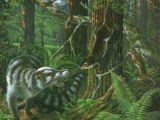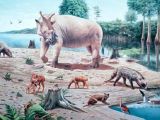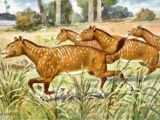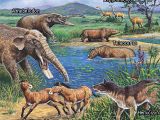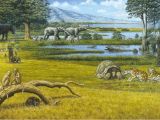When dinosaurs went extinct, the Neozoic (New life age) started. Life evolved towards what we experience today.
1. Paleogene (65-23 Ma) was the epoch when small mammals evolved to the high diversity we know today. Many groups perished without descendants. Birds and snakes, too, diversified greatly. The clime was somehow cooler and drier. The Paleogene period was made of three epochs: Paleocene, Eocene, Oligocene.
The real boom in mammal evolution occurred in the Eocene epoch, about 56 to 34 million years ago, when primates, rodents, modern carnivores and hoofed animals really took off. That's why during the Paleocene, birds could experiment large flightless predator species, like Gastornis (Diatryma) from Europe and North America.
Terror birds (Phosurhacidae), which evolved in South America, resisted until the Quaternary. Some groups of large mammals, like brontotheres, were restricted to Paleogene.
2. Neogene (23-2 Ma) was dominated by megafauna. Most families, genera and even species we know today appeared in this period. The dawn of the human evolution can be traced back then. There were two epochs: Miocene and Pliocene. The oldest human ancestors are known from Miocene. Creodonta carnivores were replaced by modern carnivores.
3. Quaternary started about 1.8 Ma. It was the era of the last Ice Ages. There were alternations between cold Ice Ages and warm inter-glacials.
It comprises two epochs: Pleistocene and Holocene. The Ice Age corresponds to the Pleistocene. Glaciers appeared and receded four times, and these actions shaped the life as we know it today on our planet. At a certain moment, ice covered one third of the Earth's surface.
The Ice Age was the era of megafauna (giant sloths, mastodons, mammoths, saber-toothed cats, glyptodonts, woolly rhinos), which effectuated movements corresponding with those of the ice.
At the beginning of the Holocene (the last interglacial in which we still are today), 10-8,000 years ago, many species of the megafauna disappeared worldwide, while other locally (like horses and camels in North America).
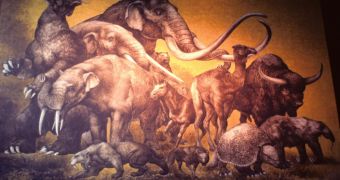
 14 DAY TRIAL //
14 DAY TRIAL // 
